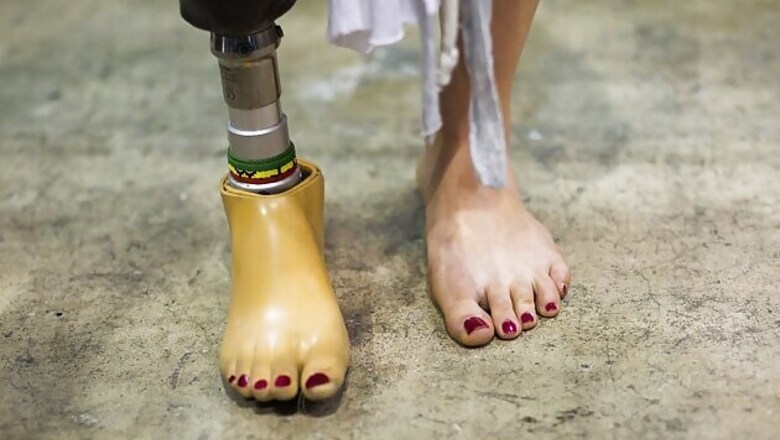
views
Washington: Researchers are developing an artificial vision system that can enable a robotic ankle to see where it is going to improve the wearer's gait.
Mo Rastgaar, a Michigan Technological University mechanical engineer and his team have already developed a prototype of the prosthetic ankle that can provide a range of motion that rivals a natural gait. Next, they aim to give their robotic ankle something different: eyes. "We are developing an artificial vision system," said Rastgaar.
The key components are a low-cost camera and a computer-controlled actuator, which adjusts the ankle's position through a system of cables. "The camera can identify the profile of the ground, while the computer knows where the next footstep will be, based on how the user is moving the leg," Rastgaar said.
"Then the computer analyses the information from the camera and applies the correct angle and stiffness to the ankle, just as you would with your biological foot and ankle," he said. Thus, the ankle could adapt precisely, whether the user is climbing stairs or striding over a pothole.
Rastgaar's team has also refined the actuator's design, making it lighter and more streamlined. Because the foot is moved by lines similar to bicycle brake cables, the actuator does not have to be mounted on the prosthesis, where the user must to move it with every step. Instead, it could be carried in a pocket or fanny pack, for example.
"Also, this new actuator system will be easy to remove, so you can use it or not, based on your needs. If the user is going to stay at home, it might be simpler to walk around the house with a passive prosthesis," Rastgaar said. He hopes that eventually their robotic ankle will find its way out of the lab and onto the sidewalk. "One of these days, we hope this can be brought to market, where it could really help people," he said.




















Comments
0 comment